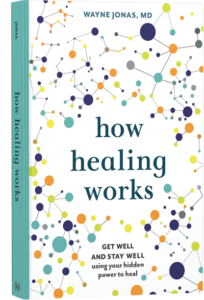In health care, if you do not name and document a problem or a process, it remains invisible. It might as well be nothing.
The biggest problem we have for improving health and lowering the costs of health care in the nation is that we don’t see or measure the “nothings” that improve health and prevent disease in the first place. Thus we are blind to those processes and throw almost all of our resources into reacting to disease flare-ups in an acute crisis.
Of course, when a crisis happens, we want the intervention that will save us. But when most of our time, expertise, and money are spent on the crisis, we don’t see what came before. There remains nothing. Thus, 90% of our health care costs and our human suffering go into the emergency room, specialty care, or to the hospital. We don’t act on what we can’t see, and we can’t see the slow progressive process that results in the visible acute crisis.
Nobel laureate Daniel Kahneman in his book “Thinking Fast, Thinking Slow” describes this problem of the human mind in a number of situations, including health care. We see what happens in our immediate environment and in a short time frame – things that happen fast – but don’t see the broad or long game – things that happen slowly. In health care, this kind of thinking has trapped us in an ever increasing spiral of cost and suffering even when we know what would reduce the risks of those acute situations and, potentially, reverse the chronic disease process that produces them. We are always looking for a new pill or procedure that will plug a leaky hole but seldom focus on repairing the pipe to prevent future leaks.
I recently saw this on full display when I followed a patient who had an acute crisis from an ongoing chronic illness into the hospital. He was 70 years old, and his heart disease was gradually progressing despite being treated with multiple drugs over many years. He was not happy with his progress and heard about a new drug being tested at a prominent research facility that might reverse his disease progression. So, he entered the study. Unfortunately, the drug didn’t work and his disease progressed even faster, resulting in an acute complication, a visit to the emergency room, and then a hospitalization.
To stop the accelerated progression of his disease and get him back on maintenance therapy required a literal army of health care specialists. A partial list of the medical professionals he saw included:
- a surgical team (and five residents and students);
- two different medical teams (with four residents and students);
- 15 different nurses;
- one palliative care physician;
- one patient navigator;
- one nutritionist;
- two radiologists;
- five radiation techs;
- one pharmacist (and student);
- transport people;
- food specialists and preparers;
- one psychologist; and
- one chaplain.
I also counted dozens of people keeping the room clean and managing reception, parking, and security. I am sure I missed some people and could not begin to estimate the cost even without the drugs used. A conservative cost estimate of his four days in the hospital is about $150,000. He was grateful for all the medical care but fearful of what his portion of the bill would be after insurance.
No one thought of the hidden costs that preceded this sudden surge to save his life. Let‘s think about them now.
One of these hidden costs was the precipitation of his disease acceleration when he entered the clinical trial that took him off some medications that were holding his disease at bay. The new trial was for a drug that was thought to accelerate recovery, but it didn’t work and he got sicker. The trial was paid for by a drug company but not the costs captured by his need to get a handle on his accelerating disease. The cost of the study was approximately $200,000 per patient, but none of this was counted in his overall health care delivery.
Another hidden cost was his lack of primary care. He had a primary care team early on but then lost it and wandered from specialist to specialist for years. No one was addressing his whole health and what was needed to keep him well. So his disease progressed even on the drugs. He took more than seven drugs prescribed by different specialists, none of them coordinated, most of them costly, without reversing his condition. Cost for primary care is about one-tenth the cost of specialists.
Other invisible costs preceded and precipitated his hospitalization. For example, even when he had primary care, he did not get sufficient support in behavior and lifestyle change for nutrition, sleep, activity, and other factors that could slow down or even reverse the progression of his heart disease – changes he could have then maintained on his own. Ultimately, this is what led to the multispecialty, multi-drug treatment that held his disease partially at bay.
Here is one more example of the “nothing” that was not seen during his hospitalization. This patient often went without care because he didn’t have money for transportation or to purchase insurance that covered his health care needs. Transportation costs were supported by community organizations and philanthropy and did not show up in the medical care cost bundle. His foregoing care also did not show up.
So how do we measure health care costs? True to Kahneman’s point, we measure the acute care, life-saving, and complex specialist, hospital-based and emergency care visits when they flare up in front of us. Costs for factors that could slow or reverse the progression of the disease are either nonexistent or paid for outside the health care system. In other words, they are invisible. They are counted as nothing to our health care system and so are not done well.
If we are going to truly create health and see where investments should be made to do that, three things need to happen.
- First, we need to measure the factors that drive health and wellbeing and reduce suffering. These measure what matters to the patient as a person throughout life – thinking long-term and slow, not just short-term and fast.
- Second, we need to invest in those slow factors we see so they do not remain invisible in our actions and coverage.
- And third, we need to have easy access to whole person care, especially in primary care, for all people and at all times so that the invisible determinants of health are no longer nothing.
This is how to measure nothing.

Take Your Health Into Your Own Hands
Drawing on 40 years of research and patient care, Dr. Wayne Jonas explains how 80 percent of healing occurs organically and how to activate the healing process.

